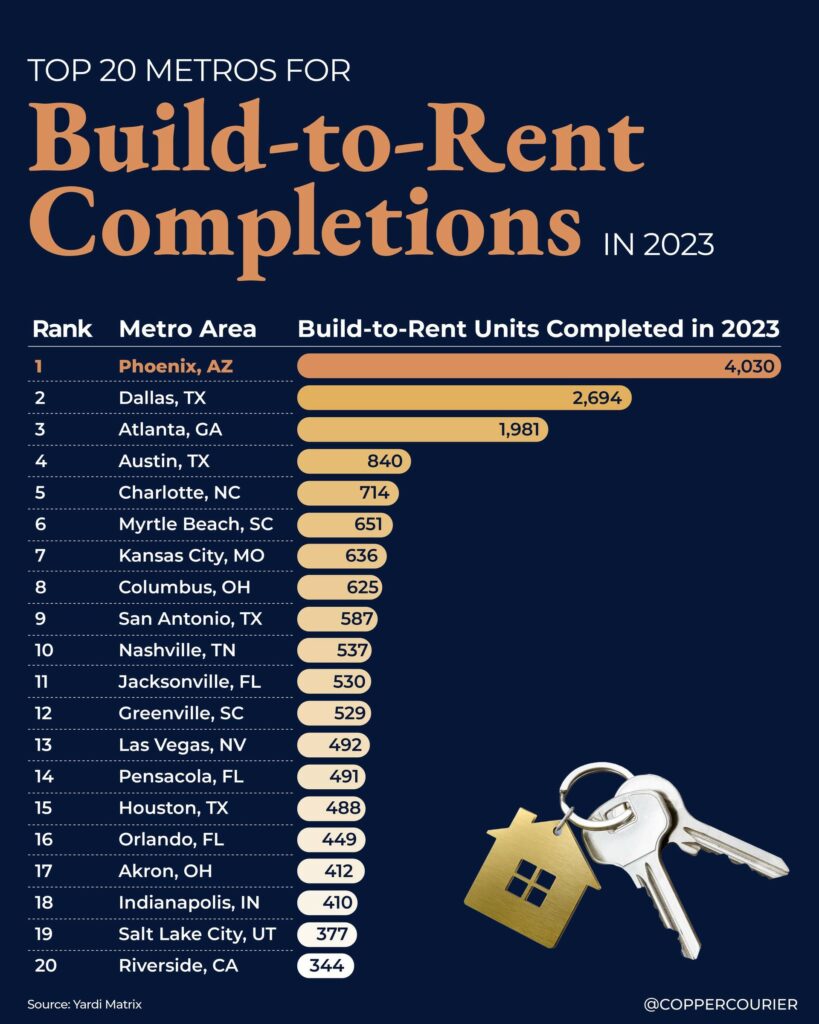AZ – Best Build to Rent Single Family Housing Market
This is a brief introduction to the housing state of affairs in Arizona. It is building up quickly. Builders, declarants, and corporate HOAs have a great swath of control over what is occurring. None of which has controlling input from residents. What I am also seeing in the Planning and Zoning Commissions is ignorance on how these developments should be dealt with regard to lot sizes, roads, etc. They are more of a rubber stamp. These communities are being built with little regard for supporting infrastructure.
I also wonder if water resources will sustain such growth. As Angry Bear presented here: “Water in Arizona is an Important Resource. Much of Its Use is by Out of State Corporations, Angry Bear,” I wonder how much we are drawing out of the reservoirs and the rivers. To date, we have had 110 days over weather over 100 degrees during the day.
The growing market of build-to-rent houses
By Alyssa Bickle
Single-family rental communities are growing quickly, fueled by high demand as mortgage prices continue to grow farther out of reach for the middle class.
According to Yardi Matrix data, a total of 27,500 homes for rent in the US were completed in 2023, with around 45,400 currently under construction.
Build-to-rent communities are neighborhoods of detached, single-family or attached townhouse-style dwelling units that are specifically built to be rented rather than purchased.
The Phoenix metro comes out on top with 4,000+ houses for rent that came on the market in 2023, growing 164% from 2022 and hitting a 10-year high.
In 2023, there were 1,336 more build-to-rent homes completed in Phoenix than the city right behind it, Dallas.
The boom in build-to-rent homes comes as developers are rushing to meet Arizona’s increased demand for housing and lack of units.
Maricopa County–containing the Phoenix metro area—was the fourth fastest-growing county in the United States in 2023, a drop from No. 1 in 2022, according to Census Bureau numbers.
Pinal County, which contains the Tucson metro area, had the seventh-highest net gain in the country, gaining over 3,000 people from 2022 to 2023.


Just another area that Wall St/venture capitalism is getting to control the flow of money into their hands and the pricing.
At the same time, climate change is obviously not a concern of Wall St. Just keep sucking up the earth’s resources with no thought as to what happens when the resource has declined to the point of no longer being able to support life.